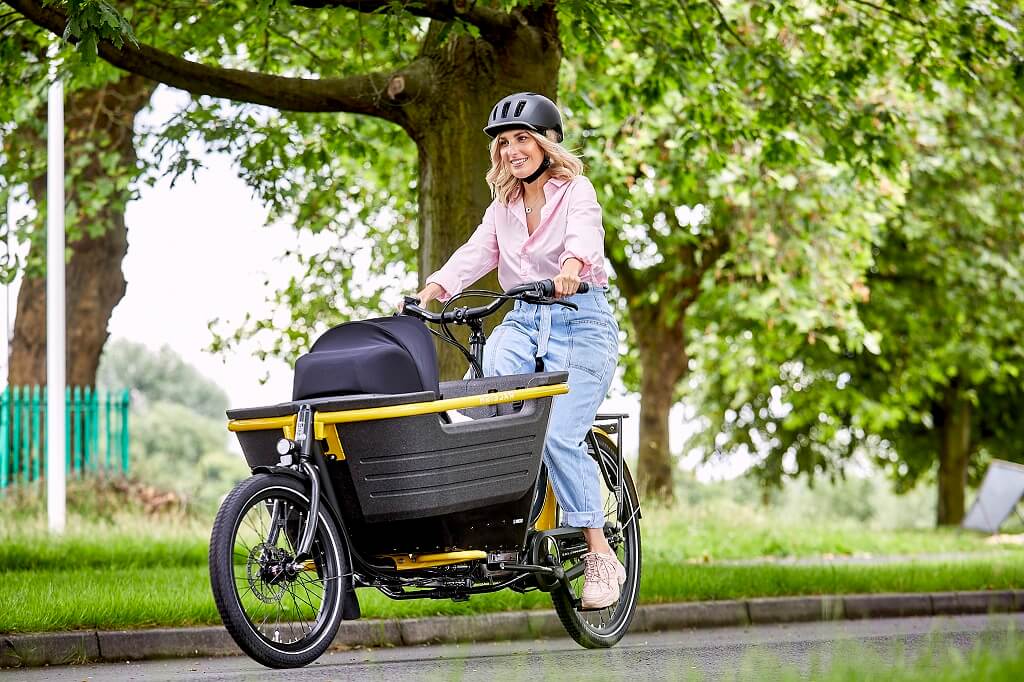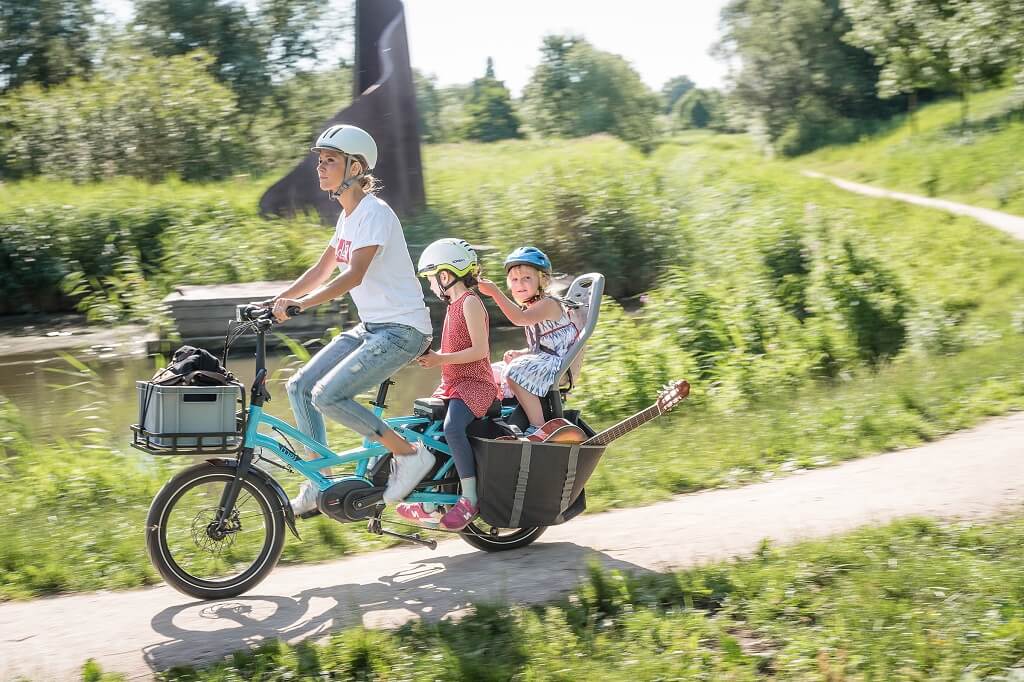Postmen, delivery men, and carriers were the first users of cargo bikes. When electric models were born, the interest in this type of bike greatly increased.
In other words, it has become everyone’s versatile bike. While postmen and couriers keep praising the bike’s utility and comfort, other professionals who have to carry heavy-duty equipment are flocking to this revolutionary bike. Including gardeners, plumbers, cleaners, restaurateurs, osteopaths, itinerant traders, and more.
Not surprisingly, one of the first fans of electric cargo bikes was families with children. She swapped her car for a bicycle to take advantage of a more economical and quicker solution. One child or three children transport is no problem. And after taking them to school, parents can quietly shop and deliver goods in the same loader.
Electric cargo bike & cargo e-trikes will be the new alternative to cars. From school to market, not forgetting the various trips that will force its users to take it anywhere, the bike will require strength, autonomy and robustness.
Table of Contents
Motors
Generally speaking, 30 to 40 Nm motors are not very powerful and do not provide better thrust. A powerful motor that provides at least 60Nm of motor torque would be more suitable. Therefore, regardless of the type of terrain and the difficulties encountered, the cyclist can be sure that his electric cargo bike can support the load perfectly. At the same time, it benefits from better dynamics across hills and terrain.
As for electric bike manufacturers, they don’t hesitate to partner with specialist engine brands to provide users with high-performance prototypes. This is why we often see Bosch, Shimano or Yamaha motors on high-end cargo e-bikes.

Electric cargo bikes’ standards
Electric cargo bikes and trikes are not straying from current manufacturing and safety standards. Like all electric assist bicycles, cargo vehicles must comply with the standard NF EN 15194. This means that the motor power must be less than or equal to 250 watts, and the assist produced by the motor must stop below the top speed exceeding 25 km/h. This assist should only be activated when the rider is pedaling.
Then comes the French standard NF-R30-050 in December 2018 and the German standard DIN 79010 in February 2020. It is important to note that these standards are current and have not been tested. According to the latest news, they will soon be replaced by harmonized European standards or NF-EN and international standards or ISO.
Price range
Electric bikes are always more expensive than conventional bikes. This is true, and it is unlikely to change. If you go upscale, the price of an electric bike will increase accordingly.
Electric cargo bikes are currently priced higher than other electric models. Prices range from 2700 euros to 7000 euros.
These bikes can be expensive, but the key is a durable and qualitative investment. For example, just 5 years of use is unlikely to get you going. Later, if you think of resale it, know that used cargo electric bikes are in high demand. It will be easy to sell.
